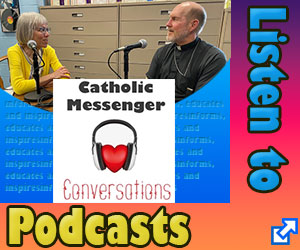By Barb Arland-Fye
Editor
My son Colin approached me with his hand extended for a handshake as he prepared to leave the house. The gesture puzzled me. In recent months, we had been exchanging hugs before saying goodbye, a custom that took years for me to cultivate in my son with autism.

Especially in the early years of motherhood, I longed for a hug from my first-born child. Wouldn’t it reassure us of our love for each other? When he was a toddler, I’d scoop him up in my arms at night and sing and dance to my favorite rock ‘n roll songs. The smile on his face provided a pretty good substitute for a hug as we navigated our way through challenging times learning to communicate with one another.
As he grew, I sometimes told him, “Colin, I need a hug.” He’d stand in front of me waiting for me to take both of his arms and wrap them around me. We reenacted this ritual for years. Colin’s much younger brother, Patrick is a hugger. I remember telling Patrick, 2 years old at the time, “You give the best hugs in the world!”
A hug between a parent and child serves as an analogy of the visible and invisible realities of the sacraments in the U.S. Catholic Catechism for Adults. “When parents hug their children, for example, the visible reality we see is the hug. The invisible reality the hug conveys is love. We cannot ‘see’ the love the hug expresses, though sometimes we can see its nurturing effect in the child” (P. 168).
Society places boundaries on hugs and their appropriateness, and I appreciate the need for caution. But an appropriately exchanged hug, in my personal experience, can convey comfort and reassurance that someone else cares.
“In countless ways social touch is being nudged from our lives,” reports The Guardian in an online article (theguardian.com, March 9, 2018). The article includes a story that tugged at my heart: “Mary Carlson is 78. She worked as a student assistant with the legendary scientist Harry Harlow, whose experiments with monkeys found that the hankering for touch is so innate that an infant, removed from its mother, would cling to a cloth-covered wire surrogate rather than a cold wire one with milk. It would choose to feel nourished rather than be nourished.”
Selfishly, that’s what I wanted from Colin from the start: that he would need me that much. Today, I want to convey my love to Colin, beyond words. A hug seems to do that. But it turns out my husband Steve has been inadvertently contradicting my efforts.
“I just think it’s proper for a gentleman to shake hands,” Steve told me when I wondered about Colin’s switch from a hug to a handshake. “When it comes to Colin, I think that’s the proper thing to teach him. I said to him, ‘We just need to shake hands, Colin.’”
Steve makes a good point. Colin’s comprehension of social etiquette and skills is definitely a work in progress, a lifelong one. Maybe I’ll share with him an article I came across in Psychology Today (March 22, 2018) that provides basic rules for hugging, such as: try to gauge the other person’s signals; decide who might like to hug, but would find your hug to be offensive; figure out the best way to hug; look at what other people are doing in the situation; and be prepared to reciprocate a hug offered to you. In the meantime, I will cherish Colin’s handshake as a genuine expression of his love.
(Editor Barb Arland-Fye can be reached at arland-fye@davenportdiocese.org.)











